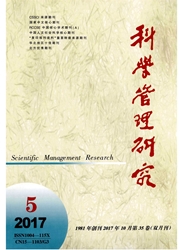

 中文摘要:
中文摘要:
通过IPAT方程理论和实证分析表明,在技术进步驱动下,二氧化碳排放随着时间的演变依次遵循三个“倒U型”曲线规律,即碳排放强度倒U型曲线、人均碳排放量倒U型曲线和碳排放总量倒U型曲线。依据该规律,可以将碳排放演化过程划分为碳排放强度高峰前阶段、碳排放强度高峰到人均碳排放量高峰阶段、人均碳排放量高峰到碳排放总量高峰阶段以及碳排放总量稳定下降阶段等四个阶段。在不同演化阶段下,碳排放的主导驱动力存在明显差异。在碳排放强度高峰之前阶段,碳排放增长主要由碳密集型技术进步驱动,在碳排放强度高峰到人均碳排放量高峰阶段,则主要由经济增长驱动,在人均碳排放量高峰到碳排放总量高峰阶段,则主要由碳减排技术进步来驱动,进入碳排放总量的稳定下降阶段后,碳减排技术进步将占据绝对主导地位。提出了相应的对策和建议。
 英文摘要:
英文摘要:
By theoretical and empirical analysis based on IPAT identity, we found that carbon emissions evolutionary process driven by technical advances over time generally follow in sequence three inverted U shape curves in the long run, that is, the inverted--U shape curve of carbon emissions intensity, carbon emissions per capita, and total carbon emissions respectively. According to three inverted U shape curves, the carbon emissions evolutionary process can be divided into four stages, that is, stage before the peak of carbon emissions intensity where the growth of carbon emissions is mainly driven by those technical advances which are usually carbon--intensive, stage between carbon emissions intensity and carbon emissions per capita mainly driven by economic growth, stage between carbon emissions per capita and total carbon emissions, and stage behind total carbon emissions by technical advances which are carbon--reducing. Finally, we also proposed some suggestions in this paper.
 同期刊论文项目
同期刊论文项目
 同项目期刊论文
同项目期刊论文
 期刊信息
期刊信息
